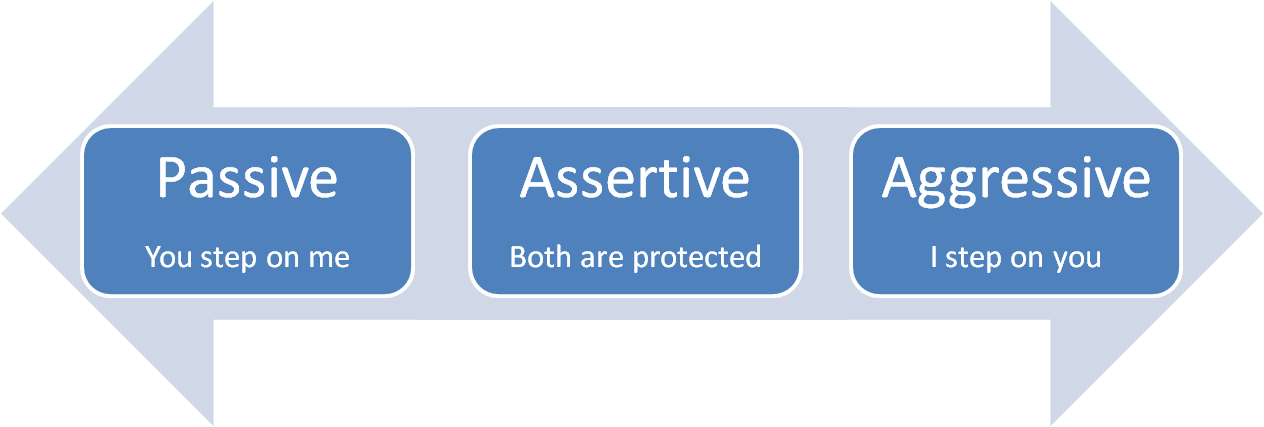The Difference Between Passive, Aggressive, and Assertive Communication
Communication breakdowns are a common cause for conflict, and poor communication strategies can lead to rapid escalation. Likewise, effective communication strategies can help you correct these miscommunications to move conflicts quickly towards resolution.
One idea that can help you choose the best communication strategy for the situation comes from what I call the communication continuum.
The continuum runs from passive strategies on the left to aggressive strategies on the right. In passive strategies, you communicate in a way that protects the other person’s interests at the expense of yours. Aggressive strategies represent the other extreme where you communicate in a way that protects your interests at the expense of the other person’s.
Assertive communication strategies lie in the middle. These strategies depend on approaches that protect the interests of both parties in the communication – yours and the other person’s.
Assertive communication approaches represent a range of techniques rather than a single point on the continuum. Some of the approaches lie a little to the left of middle – they are a little more passive – and other approaches lie a little to the right of middle – they are a little more aggressive. Wherever they lie on the continuum, all assertive strategies have this in common – the interests of both parties are protected. Depending on the situation, you might choose to go a little more passive or a little more aggressive within the assertive range.
Whether it sits a little left of center or a little right of center, the guiding principle behind all assertive communication techniques is that the technique allows you to effectively express your needs and concerns in a way that respects the needs and concerns of the other person.
Here are some guidelines for communicating assertively…
- Use “I” statements.
State your perspective as your perspective or interpretation without resorting to statements that blame the other person. For example, “You made me angry” is aggressive while “I felt angry” is assertive. - Focus on behaviors.
Avoid the desire to slip into interpretations like calling the other person rude or insensitive. Comment on their behaviors or words without labeling them. - Keep your responses short.
The longer you talk, the more likely you are to slip into either passive or aggressive techniques. - Monitor your tone of voice and non-verbal messages.
You can choose just the right words and ruin it with a sharp tone or aggressive posture. - Listen.
Pay close attention to what they have to say as well. If you do not listen, you will become aggressive. - Maintain appropriate eye contact.
Too little eye contact and you could be perceived as dishonest. Too much eye contact and you could come across as aggressive. In most situations in North America, relatively steady eye contact with brief breaks every few seconds is probably appropriate.
Here are some ways you can apply the general guidelines to communicate assertively without slipping too far into either passive or aggressive communication:
- “When you (their behavior), I feel/felt (your feeling/interpretation).”
- “When you said/did (their words/actions), I understood that to mean (your interpretation).”
- “I see/perceive (a behavior, tone, or word choice), to mean (your interpretation).”

No comments:
Post a Comment